Warm Institutional Embrace of Self-Taught Artists
Categories: Art | Beauty | Culture | People | World
By Vika https://pictolic.com/article/warm-institutional-embrace-of-self-taught-artists.htmlThere are no “outsiders” in this exhibition at the Cincinnati Art Museum.
6 PHOTOS

1. Adolf Wölfli, “Elisabeth Bieri” (1907), graphite pencil and crayon on paper, 35 1/2 x 47 1/4 inches (all images courtesy Cincinnati Art Museum)
CINCINNATI, Ohio — Historically, many artists labeled “self-taught,” “folk,” “art brut,” and “outsiders” have been subject to cultural and conditional strictures affecting their position in society. Emerging art discourse urges museums to elevate the exposure of self-taught artists without perpetuating the separation between art world “insiders” and “outsiders” and to provide audiences with opportunities to engage with artworks not overshadowed by personal biography while conveying the unequal treatment of marginalized artists. How do museums walking this tightrope keep their balance?
Creating Connections: Self-Taught Artists in the Rosenthal Collection, currently on view at the Cincinnati Art Museum, strikes a constructive and meaningful balance by presenting artworks that stand on their own merit and addressing the ways that self-taught artists are contextualized. The show is comprised of 38 diverse artworks from the collection of Richard Rosenthal, who started collecting in the 1960s with Shaker furniture and expanded to artists such as Janet Sobel, whose work preceded Jackson Pollock’s avant-garde drip paintings, and the politically incisive Thornton Dial. The framework of Creating Connections — a showcase of a private collection, not a genre — aids in sidestepping some of the potential issues that perpetuate the segregation of “self-taught” from “mainstream.” It is a compelling exhibition that advocates for both the artists and the audience.
Rosenthal’s collection is expansive, but the exhibition maintains a focus on individual artworks. It includes archetypal works by well-known artists Henry Darger, Martín Ramírez, and Bill Traylor, whose respective oeuvres have fueled both “self-taught” scholarship and the market. The Darger pieces exemplify his narrative imagination and his dazzling graphic aesthetic. A generous three-panel double-sided drawing illustrates scenes from his epic centered on characters he called the Vivian Girls, while the colorful “Blengin” is a highly detailed portrait of a “blengiglomenean,” a hybrid dragon-butterfly creature, embodying Darger’s acute inventiveness.
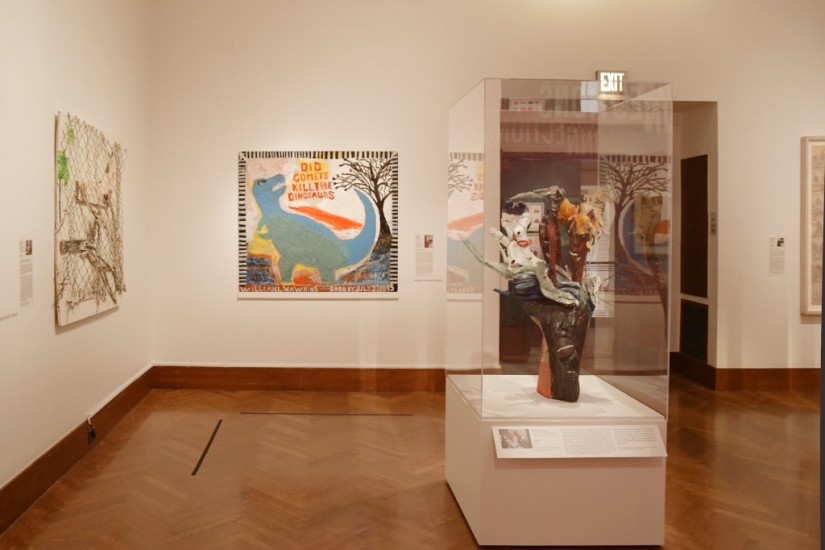
2. Installation view of Creating Connections: Self-Taught Artists in the Rosenthal Collection at the Cincinnati Art Museum featuring works by Ronald Lockett (left), William Hawkins (center), and Bessie Harvey (right)
The show also gives prominence to Black artists from the American South, including Ronald Lockett, whose “Traps” is a chain-link fence assemblage; Bessie Harvey, represented by a stirring root sculpture; and David Butler, who created vibrant sheet-metal sculptures. These practices reflect the Yard Show tradition that emerged in the 1960s following the assassination of Dr. Martin Luther King Jr. The inclusion of Lockett, who learned from and was inspired by his cousin, fellow exhibiting artist Thornton Dial, also subtly nods to the fallacy of “self-taught.” Their relationship is a reminder that education reaches beyond art academies and thrives among families and communities.
Other works in Creating Collections range from a mosaic figure from Nek Chand’s Rock Garden in Chandigarh to the extraterrestrial signs of Ken Grimes to intricate quilting tableaux by Ohioan Mary K. Borkowski. To represent the European history of “self-taught” artists via the Art Brut movement of the 1940s, a mesmeric drawing by Adolf Wölfli is included. Works in the show by Jean Dubuffet, who cultivated the genre Art Brut, visually demonstrate how he borrowed stylistically from the artists he collected and defined as “untouched by artistic culture.” This adept comparison adds a layer to the exhibition by illustrating the direct influence on the modern art establishment by underrepresented contemporaneous artists. In this way, Rosenthal’s broad approach to collecting and, by extension, this exhibition resist the impulse to label these artists rather than perpetuating umbrella terms like “outsider.”
Creating Connections also champions the audience, with a thoughtful and accessible preface titled “What is this art, and how do we talk about it?” The preface prompts viewers to consider the nuances of labeling artists and to ask specific questions while viewing the exhibition, such as “What qualifies as museum-worthy art?” and “When does the promotion and sales of work by marginalized artists cross into exploitation?” In addition, the show raises the questions of how to measure the importance of the artist’s biography, noting that institutional didactics may be heavy-handed in highlighting mental health or traumatic events, as a means to validate the artwork as “museum-worthy.”
The artists’ undeniable talents, driven by both personal and political concerns, collectively contribute to a more inclusive art history and, in turn, a deeper understanding of ourselves and our time. The exhibition’s topics are an important call to action, reminding viewers to be active in looking at artwork, and in dialogues. They also remind us that an integral part of education is simply provoking discussion and thought.
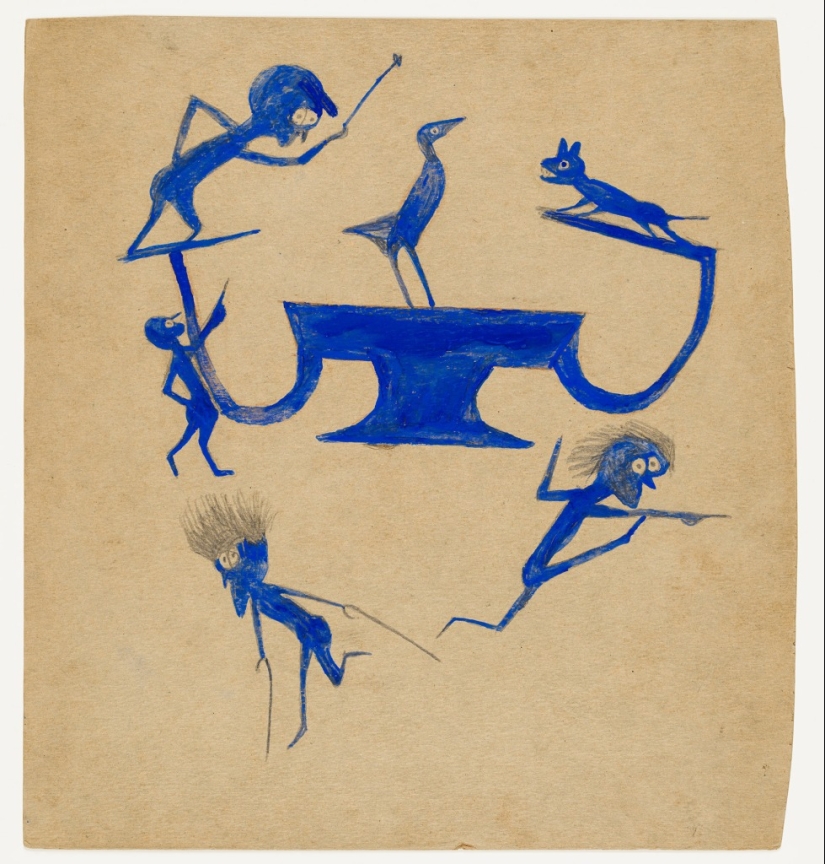
3. Bill Traylor, “Exciting Event in Blue: Four Wild Men, Barking Dog, Perched Bird, and Construction” (circa 1939–42), tempera, graphite pencil, and ink (or watercolor) on thin cardboard, 14 7/8 x 13 7/8 inches (© Bill Traylor Family Trust)
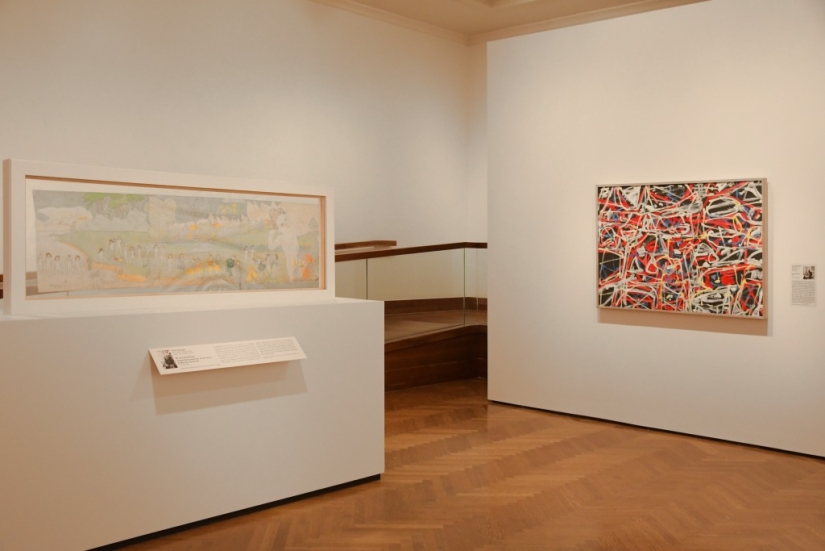
4. Installation view of Creating Connections: Self-Taught Artists in the Rosenthal Collection at the Cincinnati Art Museum featuring works by Henry Darger (left) and Jean Dubuffet (right)
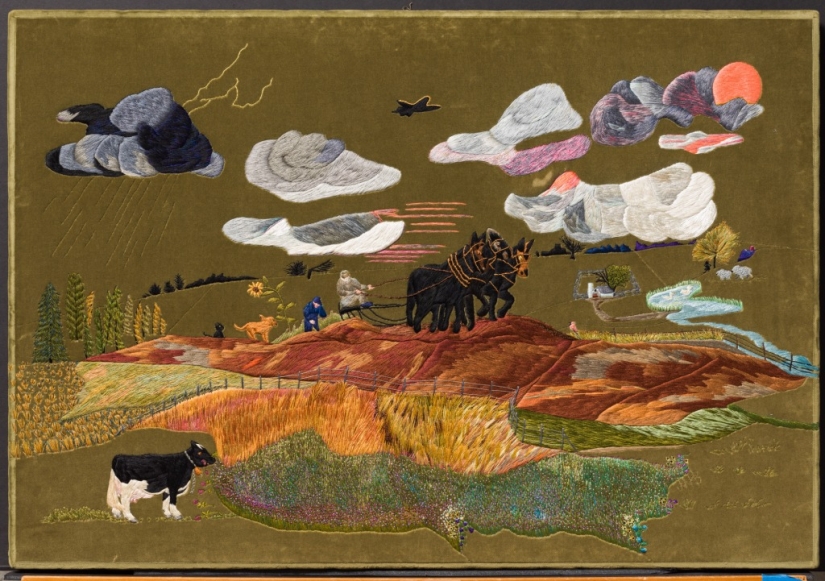
5. Mary K. Borkowski, “Toil, Strength, and Devotion” (1973), hand stitching with silk thread on velvet, 20 1/8 x 29 1/4 inches
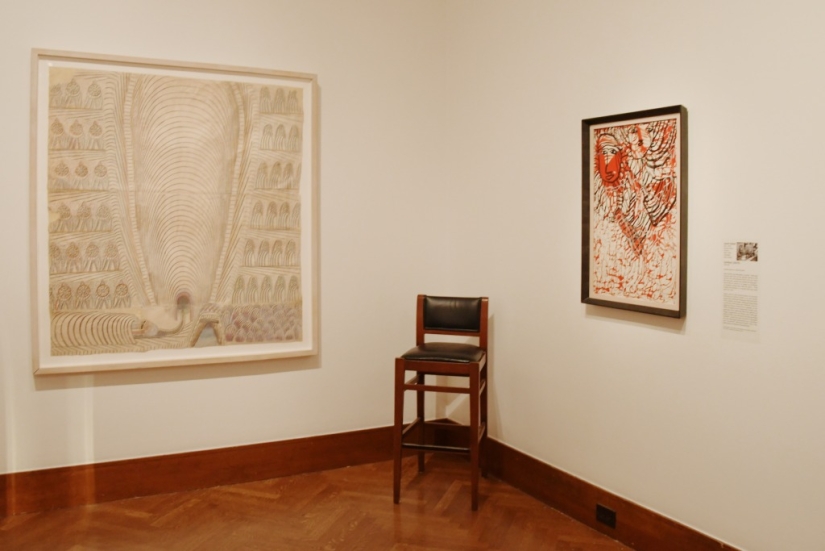
6. Installation view of Creating Connections: Self-Taught Artists in the Rosenthal Collection at the Cincinnati Art Museum featuring works by Martín Ramírez (left) and Janet Sobel (right)
Keywords: Exhibition | Artworks | Masterpieces | Art museums | Artists | Paintings
Post News ArticleRecent articles

Girls from our collection could easily compete for the title of "Miss universe". And this despite the fact that they are all ...

Young Milla Jovovich in the arms of Michael Jackson - this shot from almost thirty years ago, published on the actress’s ...
Related articles

Colin and Kristin Poole are an amazing creative family. Colin is a world-renowned artist, and his wife Kristin is a wonderful ...

Yuuki Morita is a promising young sculptor and artist from Japan. The source of inspiration for him was nature, its diversity and ...

A good designer can even banal things to make a work of art. Bad — on the contrary, spoil, and even problems will create. Here ...

From explosions at the slightest collision to endless drifts without a scratch, cinema has long since devised its own laws of ...